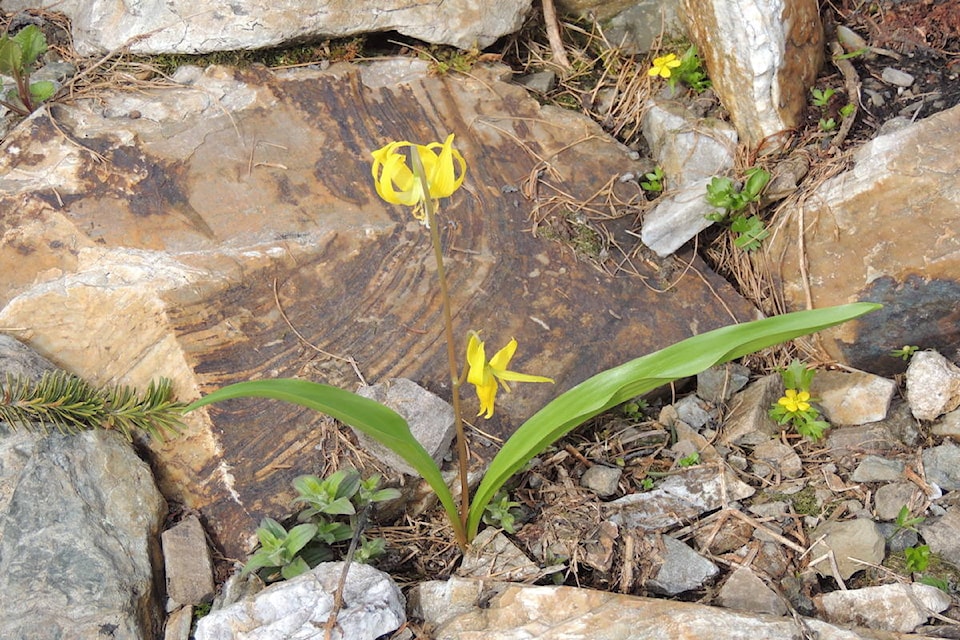By Ed McMackin
Spring flowers around the first day of autumn? Is that usual? Not likely! That would be a significant delay in the flowering time.
However, it’s true that some flower species bloom later at high elevations, and, so, if one misses seeing the early spring flowers at low elevations they may be able to see the same ones blooming higher up. Glacier lily flowers grace many of the bedrock slopes at valley levels but may also be seen at the same time in bud or flower at higher elevations or, later on, maybe seen in bloom, correspondingly later, right up into the cooler alpine regions, a month later.
It is also known that flowers that bloom on a south aspect may appear a week or so later in a shady location or on the north side of a mountain. But why would any alpine flowers, that normally bloom in late June and early July, be blooming at the same elevation, two and a half months later, in September, right up to, and around, the first day of autumn? It was happening on the 22nd of September.
Glacier lilies were in bud and blooming September 5 to 22, in a small area, while all around, in the same draw they had gone to seed. They likely would have bloomed beyond that if there wasn’t a killing frost.
In the rest of the draw, along the trail down to Plaid Lake, glacier lilies would have started blooming in early July but on one side of the draw, a small avalanche dumped snow, covering a half-acre area, delaying the appearance of leaves and flowers of glacier lilies, alpine buttercups, western anemones, and so on. This was a once-in-every-five-years event, when enough snow had collected, under the right conditions, in a small avalanche area.
This infrequent snow patch melted enough by the first of September to permit growth and flowering to the snow-edge and even into the thinnest snow covering. (Western anemones will often come up through an inch or two of snow). The normal succession of blooming took place, first, glacier lilies and alpine buttercups followed by western anemones, early blue violets and so on. None of the flower blooming sequences appeared to be missing, but would likely have stopped if a killing frost and persistent freezing temperatures prevailed.
Some plants and shrubs have been known to have a second blooming. However alpine plants need the whole alpine summer season just to sprout, bloom and produce seed in the short alpine growing time. Some plants may be “biennial” to give enough time for growth and seed production.
The question is, “Would the glacier lilies and so on have sprouted, or continued growing the next year if the snow-patch hadn’t of melted? My response to that is, yes, as long as the ground stayed cold and protected throughout the winter. The ground under a foot or so of snow doesn’t often freeze and many alpine plants have a “built-in” kind of “antifreeze” to aid survival.
